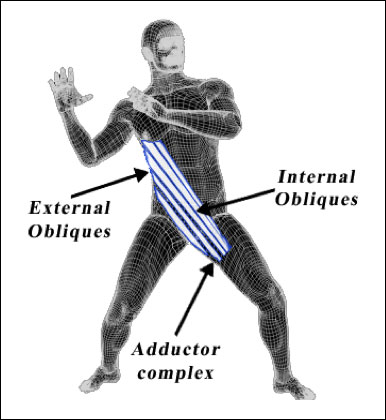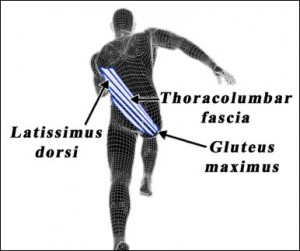Better mobility in seconds is a lofty promise. This isn’t an infomercial—it’s science! I can speak from personal experience, since I found this methodology after recovering from four spinal surgeries in the past five years.
No, the surgeries were not because of bad training, they were necessary because of some bad congenital issues plus more than a decade of athletics. This combination left me with what looked like horrible mobility issues in the upper and lower body. At first, my plan was similar to what many of us have probably done: stretch, stretch, and more stretching. While stretching made me feel better, my mobility never really improved.
Now, if something isn’t working I don’t keep doing it while banging my head against the wall! A change of course was needed, but I didn’t know what to do. I researched everything. A light bulb came on while I was reading the works of physical therapist, Gray Cook, and spinal expert, Dr. Stuart McGill. Both Cook and McGill referenced the physical therapy concept of PNF (proprioceptive neuromuscular facilitation). This classic therapeutic approach didn’t focus on the muscles—it focused on the power of the nervous system.
"Proximal stability for distal mobility," became my rallying cry. Even if that doesn’t make sense to you now, it will soon change how you train! The concept is based on the idea that if your spine perceives instability, it will reduce the mobility of the extremities to protect itself. This is very common with the shoulders and hips. Every time I stretched my hamstrings, it felt like I’d never stretched them before in my life! Clearly, my problem was with the nervous system and instability, and wasn’t an issue with my muscles. Using this one concept completely changed my mobility and how I train. Shifting to a concept of "activation" instead of stretching dramatically improved my mobility and strength training. And it didn’t just work for me...
As I continued to travel the world teaching, I started to become known as some kind of magician. By using the activation concept, I could literally transform people who have had long-standing mobility issues in minutes. But, it isn’t magic, it’s science!
Amazing as it sounds, most of the activation drills can be performed with
kettlebells and Ultimate Sandbags. Here are three of my favorite drills to drastically change your mobility.
Kettlebell Dead Bug
Many people think the dead bug is only a core exercise, and it is definitely a strong one! However, what differentiates it from other core exercises is our goal when using it.

The dead bug exercise teaches valuable concepts such as pelvic control along with the under appreciated idea of cross patterning. Cross patterning is important every time we walk, run, or do anything that demands our bodies work with opposing limbs. We use this natural opposing limb pattern for many reasons, but it still must be trained. Unfortunately, due to injuries and sedentary lifestyles, we lose natural human movements like cross patterning.
The kettlebell dead bug improves core strength and cross patterning, along with the reflexive deep core muscles. Even though you probably aren’t aware of your reflexive deep core muscles, they have a great impact on spinal stability. Still, if I asked you to flex your multifidus you would probably feel a little lost. Exercises like dead bugs help train these reflexive muscles so you don’t have to search for your pelvic floor.
Adding kettlebells to the movement provides resistance and important feedback. Performing dead bugs without feedback from weights will completely miss the core stability aspect of the exercise. Simple progressions can go a long way towards getting more value from this drill.
Kettlebell halos and
Ultimate Sandbag around-the-worlds both involve a circular motion around the body with a weight. Both of these exercises challenge the body to RESIST the motion from the weight. Imagine challenging your core in 360 degrees—it’s very important, especially since most core exercises only train the body in limited ranges and directions.
Both exercises can start in the tall kneeling or half kneeling position to activate more of the core. Again, we want to hit those reflexive muscles. But we also want to teach your feet to be active with the ground, so the drill should also be performed standing. Active feet activate the hamstrings and glutes—important muscles for your core. Simply cueing someone to use their feet greatly changes the drill and will carry over to make many other lifts in your training stronger.
What’s the difference between a kettlebell halo and an Ultimate Sandbag around-the-world? The kettlebell halo has a smaller range of motion, making it a good choice for someone with a very limited range of motion in the shoulders and limited core stability. The Ultimate Sandbag around-the-world amplifies the range of motion and is a great progression alternative to using heavier weights.
Kettlebell Press or Ultimate Sandbag MAX Glute Bridge
Glute bridges have long been used in the
RKC to teach how to properly extend the hips. Proper hip extension improves our performance of kettlebell ballistics like swings, snatches, and cleans. More importantly, it teaches people how to lift through their hips and the low back.
One of the most important and recent fitness ideas is to focus on the ligaments, tendons, and fascia along with the muscles. Fascia is a type of soft-tissue that encapsulates everything. It’s everywhere throughout the body because it is also a system of communication and connection. Think of a home made "telephone" toy—two cans attached by a string. The string is a good analogy for fascia’s communication role.

Fascia creates very specific connections. One of the most important is what physical therapist Diane Lee describes as the posterior oblique system. This is also involved with cross patterning—your right leg works with your left arm and the left leg with the right arm. The posterior oblique system helps the body efficiently move and create stability during unstable activities like walking, running, etc.
How does the posterior oblique system feature in your training? In the RKC, we learn to keep our shoulders packed and
activate the lats during swings and most other ballistics. Teaching the body to use the lats with the glutes actually trains the posterior oblique chain. In fact, we could make a strong argument that NOT using the lats with the glutes isn’t very functional.
We can easily connect the lats, core, and glutes by using kettlebells and an Ultimate Sandbag with our glute bridge. Adding a kettlebell or Ultimate Sandbag allows us to get so much more from this simple but powerful drill. Watch the video below to learn how we can use these two tools to create a very valuable progression.
I always tell my students that our goal is to teach how the body actually works instead of just teaching more exercises. Teaching a unique exercise is not the source of our "magic", it happens when we re-teach our bodies how to naturally move. The results speak for themselves!